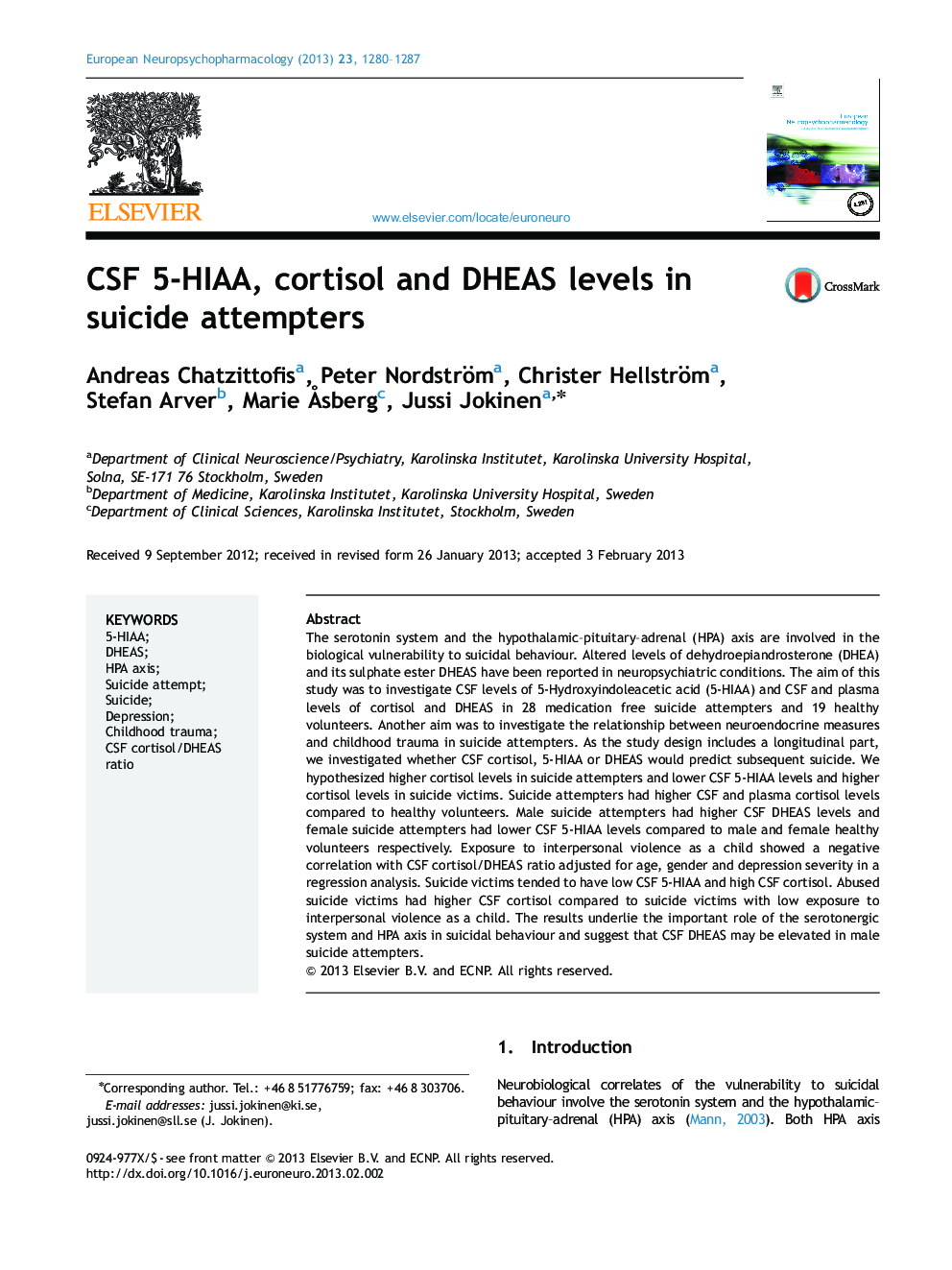| Article ID | Journal | Published Year | Pages | File Type |
|---|---|---|---|---|
| 10299181 | European Neuropsychopharmacology | 2013 | 8 Pages |
Abstract
The serotonin system and the hypothalamic-pituitary-adrenal (HPA) axis are involved in the biological vulnerability to suicidal behaviour. Altered levels of dehydroepiandrosterone (DHEA) and its sulphate ester DHEAS have been reported in neuropsychiatric conditions. The aim of this study was to investigate CSF levels of 5-Hydroxyindoleacetic acid (5-HIAA) and CSF and plasma levels of cortisol and DHEAS in 28 medication free suicide attempters and 19 healthy volunteers. Another aim was to investigate the relationship between neuroendocrine measures and childhood trauma in suicide attempters. As the study design includes a longitudinal part, we investigated whether CSF cortisol, 5-HIAA or DHEAS would predict subsequent suicide. We hypothesized higher cortisol levels in suicide attempters and lower CSF 5-HIAA levels and higher cortisol levels in suicide victims. Suicide attempters had higher CSF and plasma cortisol levels compared to healthy volunteers. Male suicide attempters had higher CSF DHEAS levels and female suicide attempters had lower CSF 5-HIAA levels compared to male and female healthy volunteers respectively. Exposure to interpersonal violence as a child showed a negative correlation with CSF cortisol/DHEAS ratio adjusted for age, gender and depression severity in a regression analysis. Suicide victims tended to have low CSF 5-HIAA and high CSF cortisol. Abused suicide victims had higher CSF cortisol compared to suicide victims with low exposure to interpersonal violence as a child. The results underlie the important role of the serotonergic system and HPA axis in suicidal behaviour and suggest that CSF DHEAS may be elevated in male suicide attempters.
Related Topics
Life Sciences
Neuroscience
Biological Psychiatry
Authors
Andreas Chatzittofis, Peter Nordström, Christer Hellström, Stefan Arver, Marie Ã
sberg, Jussi Jokinen,
